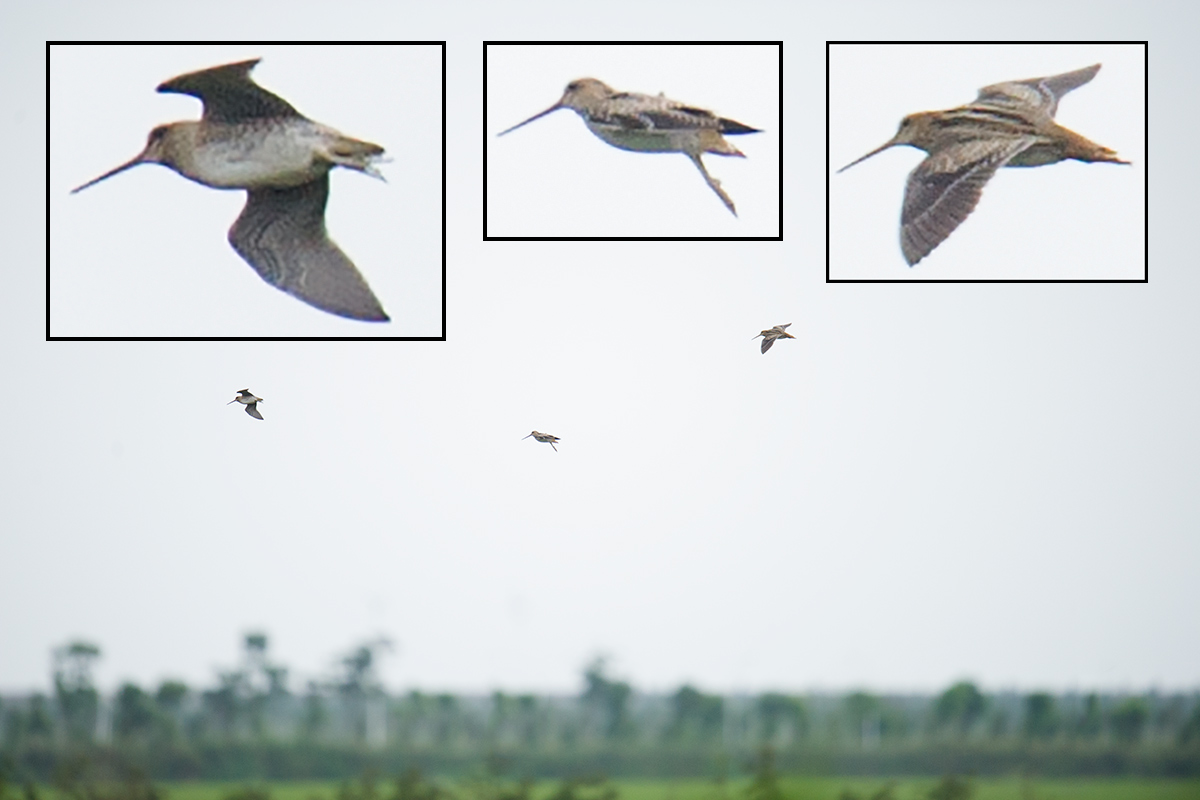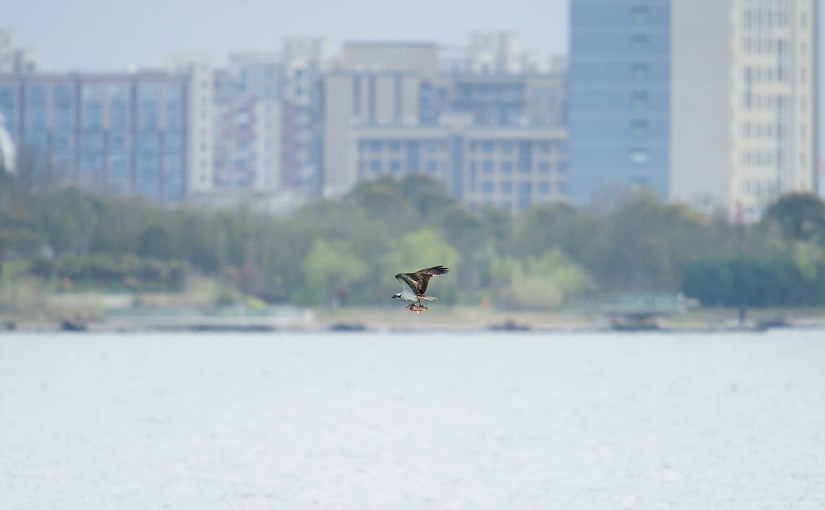Spring has surged into Shanghai! Elaine Du and I noted 92 species on the Qingming weekend. We found 212 endangered Great Knot at Cape Nanhui and Bluethroat and Brown-headed Thrush on Chongming. Other highlights were 2 Greater Scaup and Black-necked Grebe on Chongming and at Cape Nanhui 2 endangered Yellow-breasted Bunting, “Swintail” Snipe, 10 Saunders’s Gull (rare in Shanghai), 3 endangered Far Eastern Curlew, 2 Eurasian Bittern booming amid the sound of traffic, and 10 Pacific Swift.
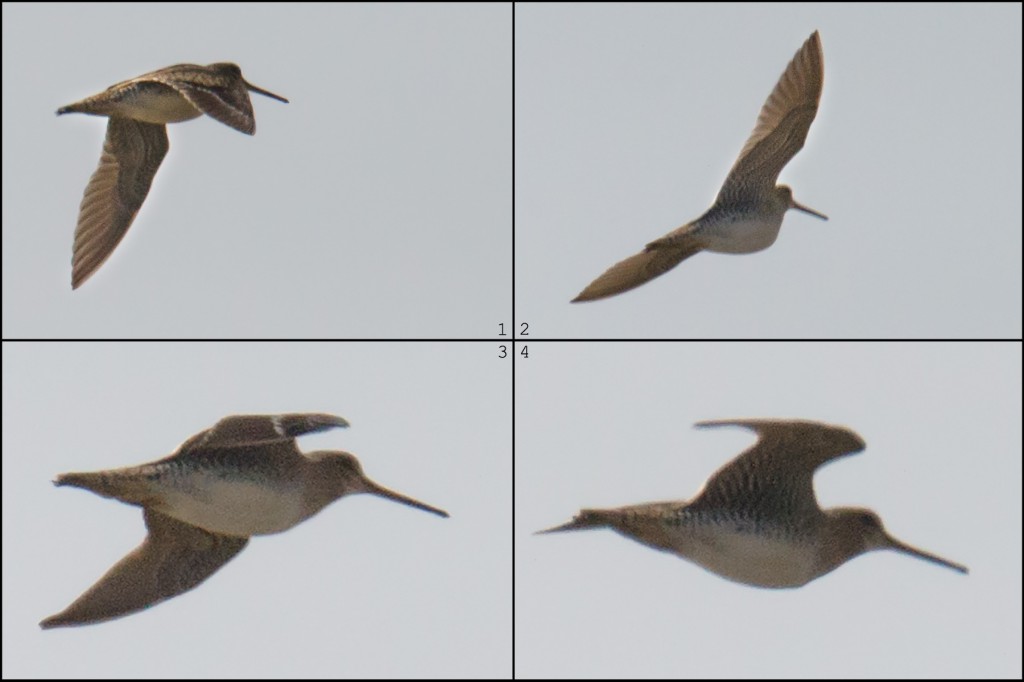
On Sun. 3 April, fog once again kept Elaine and me off Hengsha Island, our original destination. Driving our rented Skoda Scout, we left the Hengsha ferry terminal on Changxing Island and took the Shanghai Changjiang Bridge across the Yangtze to Chongming Island. Visibility was less than 100 meters when we finally arrived at Chongming Dongtan National Bird Sanctuary and Nature Reserve. Rain, usually a drizzle, sometimes a shower, let up only briefly, around noon.
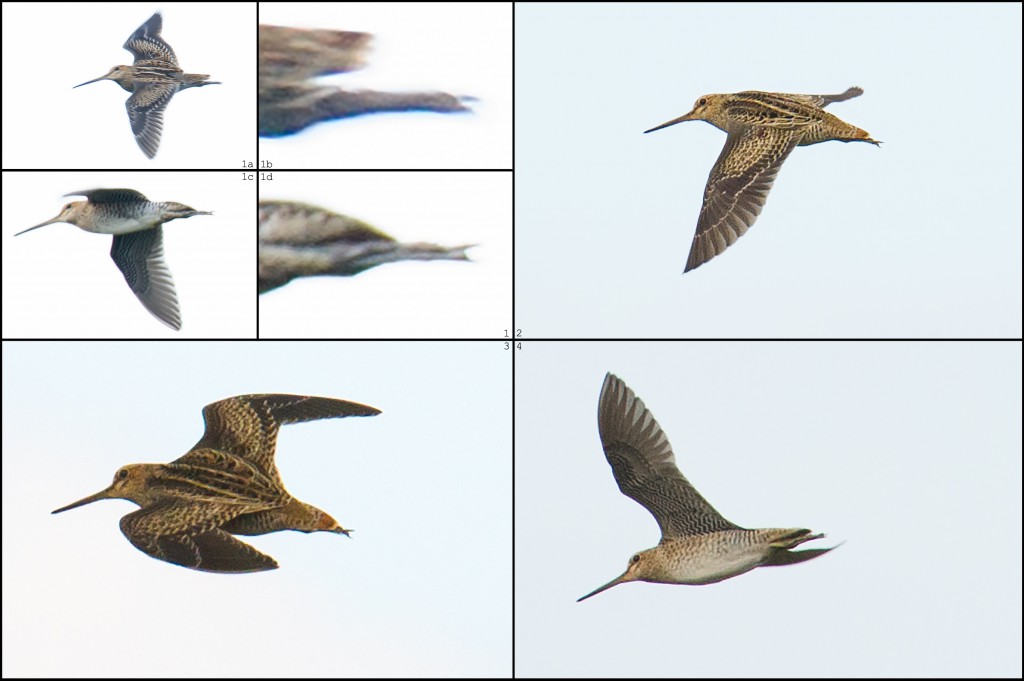
We stayed away from fee and permit areas. The northeast sea wall, with its well-protected mudflats beyond, is blocked off by guards wearing camouflage uniforms. A road running inside and parallel to the sea wall is not in a permit area and affords views of the canal-pond at the base of the wall. Reeds running along this inner road are the first tall, thick vegetation a bird flying along the coastline is likely to see and contained several migrants, among them the Brown-headed Thrush and a leaf warbler that may have been Chinese Leaf Warbler. The Phyllosc was soaking wet, and the characteristics I was noting, such as its seeming lack of a strong coronal stripe like Pallas’s Leaf Warbler, may have merely been the effect of the water. We noted the bright yellow rump, were starting to get hopeful—and then the bird disappeared.
On the eastern end of Chongming, we covered the farmland inside the sea wall and did not drive in the permit area atop the wall. We found the Bluethroat at the very good “snipe corner” (31.479537, 121.937001) south of Changjiang Lu. True to form, the skulker quickly hid away, refusing to flush or show. Still, the fleeting glimpse we got was Elaine’s best view ever of Bluethroat.
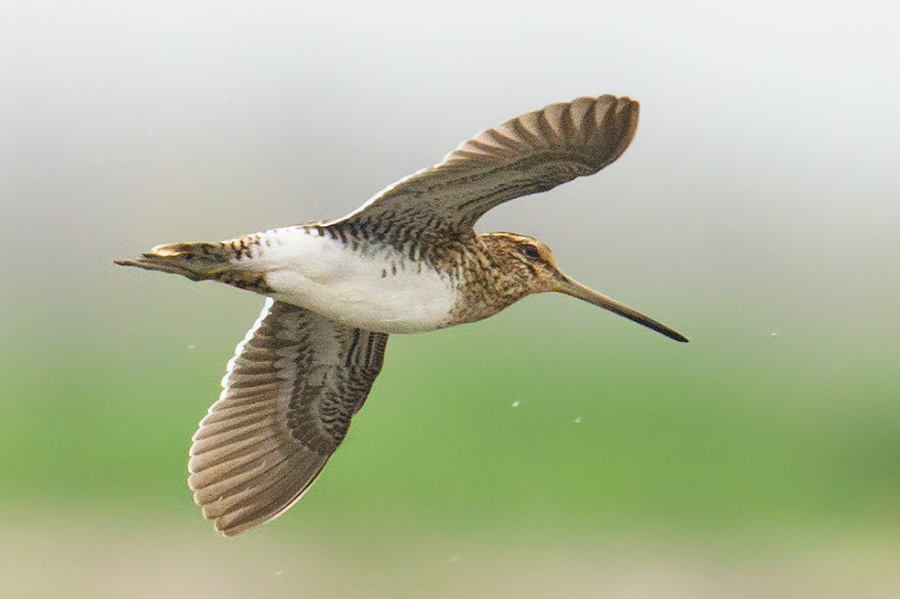
My walk through the reeds in pursuit of the Bluethroat scared up 2 Japanese Quail. Common Snipe were numerous, a pair of Oriental Skylark were hollowing out a tiny cup in the grass, and Water/Brown-cheeked Rail squealed once and fell silent. I recorded a fifth distinctive vocalization of Reed Parrotbill; I call this one the “siren.” (For the previous four calls, please visit “Amid the Din of the Diggers.”)
Reed Parrotbill Calamornis heudei, siren call, Chongming Island, Shanghai, 3 April, by Craig Brelsford (00:04; 954 KB)
On Mon. 4 April, Shanghai-based British birder Michael Grunwell once again joined Elaine and me at Cape Nanhui. We noted 73 species. Whereas outings in March gave us a “spring emerging from winter” impression, on Monday the transition to springtime felt complete. All that was missing were the flycatchers and the leaves on the trees in the microforests, those migrant traps dotting the sea wall.
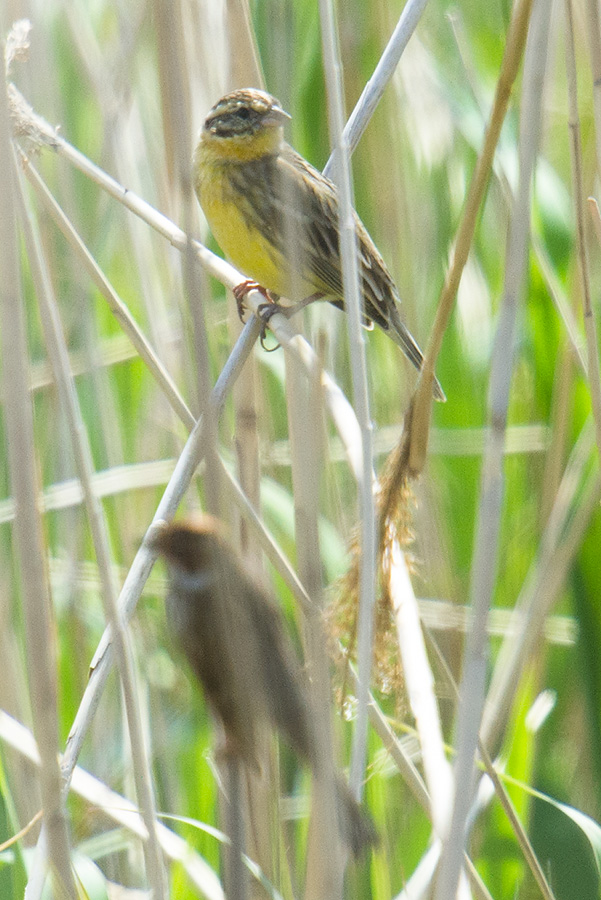
We rented no car, instead relying on the Shanghai Metro, taxis, a ride from a pair of friendly tourists, and our legs. With sunny skies and temperatures reaching 18 degrees, the weather was nearly perfect, and the exercise put us in a good mood.
The birding area at Nanhui is steadily going from “half-forgotten, mostly empty, natural” to “popular, busy, recreational.” Cars were packed around Nanhuizui Park and the Holiday Inn, and Qingming tourists were streaming out of the buses. Amid the commotion we found our first-of-season singing Manchurian/Japanese Bush Warbler as well as a single Asian House Martin flying among the swifts, the suddenly numerous Barn Swallow, and a single Red-rumped Swallow. At the Magic GPS Point (30.880540, 121.964572), we climbed to the deck of the derelict building next to the Holiday Inn. There, we enjoyed the expansive views, noted more Pacific Swift, and wondered how on earth a building as huge as this could be built then promptly abandoned.
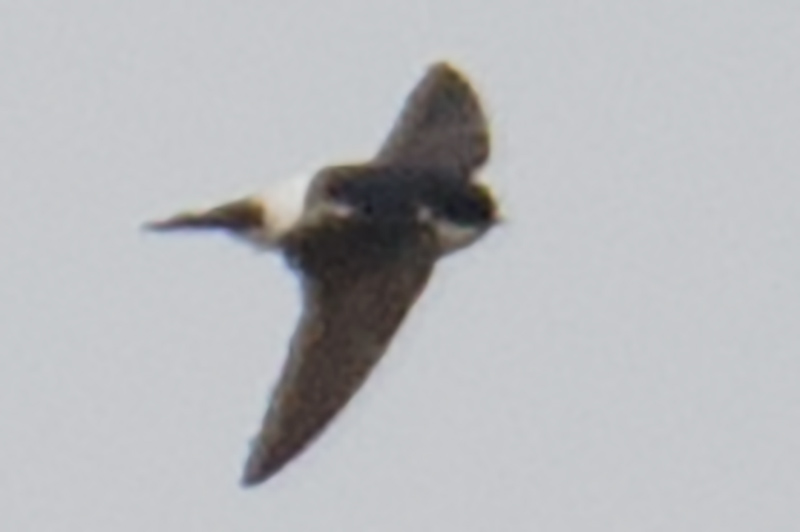
North of the Nanhuizui area, photographers were working on 12 Black-winged Stilt that were using a pond close to Microforest 2 (30.926039, 121.970725). Around that pond we found Marsh Sandpiper, Temminck’s Stint, and Sharp-tailed Sandpiper. The quiet, half-fallow fields behind the pond evoked memories of old Nanhui. We found our Yellow-breasted Bunting here as well as Chestnut-eared Bunting and about 60 of our 90 Pallas’s Reed Bunting. We were looking for but failed to find Japanese Reed Bunting. We noted the absence of harriers, which normally would be hovering over the fields and reed beds.
Great Knot were seen in flight and on the mudflats as the tide receded.
PHOTOS
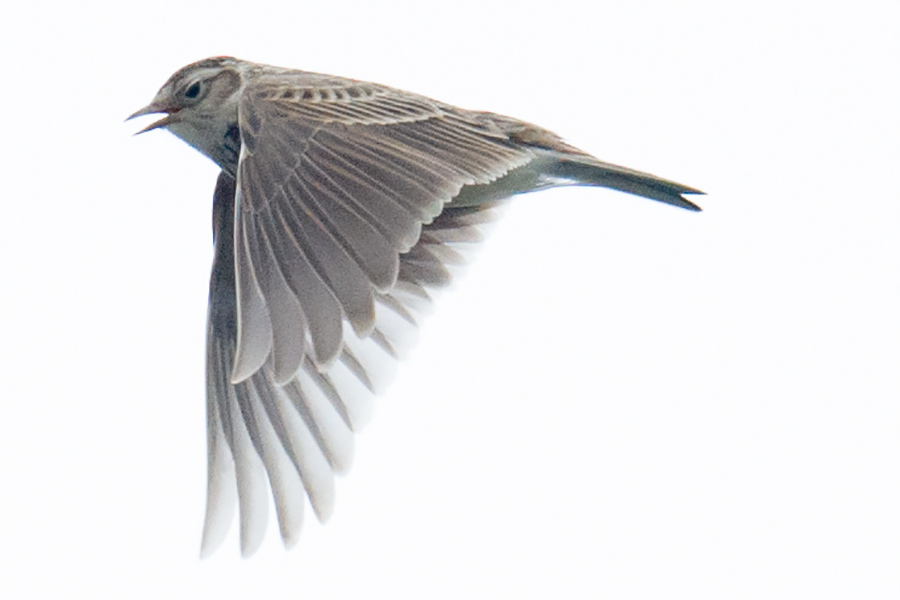
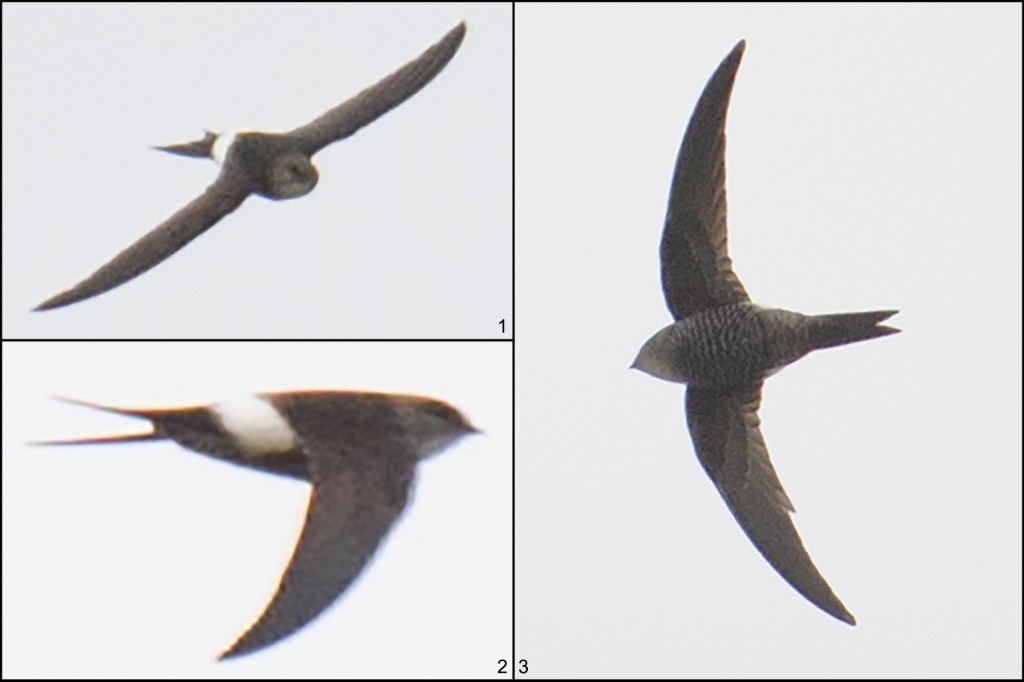
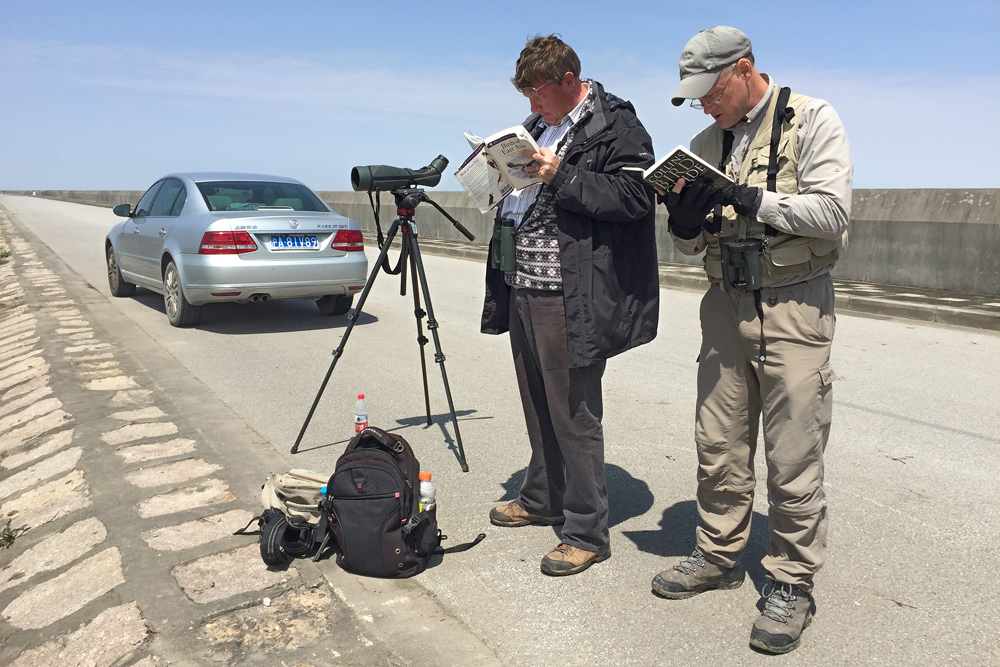
Featured image: Western Osprey carries a fish while flying over Dishui Lake in Shanghai. In the background looms Lingang, a satellite city that did not exist 10 years ago. (Craig Brelsford)

